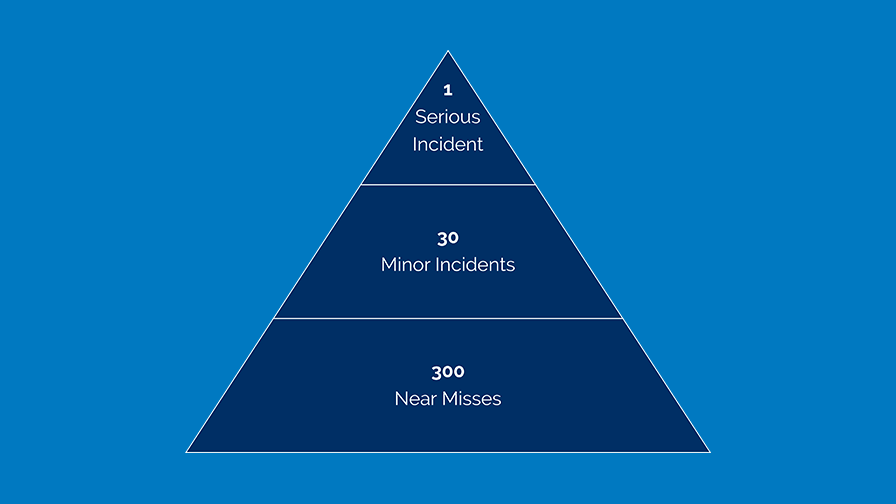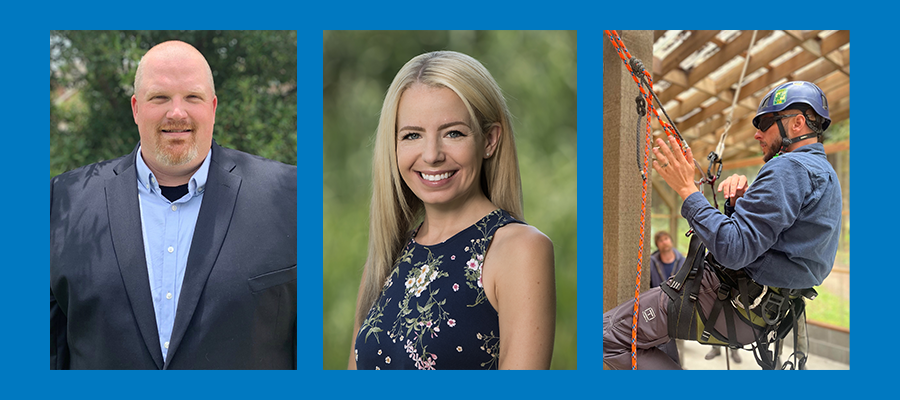- Vegetation Management Services
- Industries
- In Your Neighborhood
- About
- Careers
- Webinars
- Articles
Treating Complacency Like a Disease

Treating Complacency Like a Disease
By Adrienne Jones, safety manager, ACRT
The concept of a disease can be described as a condition that impairs normal functioning or harmful development. Do you notice any parallels with complacency?
To spot the signs of complacency, the National Safety Council notes that first, you must be able to identify the following signs in yourself.
- Dissatisfaction with your work and/or lack of motivation
- Missing steps in work processes
- Frequent near-misses or incidents
Take a look at Heinrich’s Pyramid. In his book Industrial Accident Prevention: A Scientific Approach, he explains for every 300 near misses or first aid incidents, there are 30 minor incidents or injuries, and of those 30, one is a serious incident or fatality.
According to the U.S. Bureau of Labor Statistics, in 2021, there were 2,607,900 nonfatal injuries and illnesses reported and of those incidents, 5,190 were fatal incidents — up 8.9% from 2020.
There’s a powerful poem “I Chose to Look the Other Way” by Don Merrell that speaks volumes about complacency. The opening line reads, “I choose to look the other way. I could have saved a life that day. But I chose to look the other way.” The poem explores not wanting to inconvenience someone or take the time to pause, what it means for the person who didn’t speak up and the consequences of their actions — or lack thereof. It’s important to think about our choices, maintain a questioning attitude, and what’s going to happen as a result of them.
Combatting complacency
An article by Jeremy McCombs, an ACRT Arborist Training instructor, reminds readers that complacency comes well-equipped with consequences including lost work time, lost mobility or health, lost family time, lost production, permanent disability, or death.
So how can we work towards combatting complacency? Stop Work Authority (SWA) is an excellent tool to implement throughout your organization (if there’s not a policy already in place).
Thanks to the Occupational Safety and Health Administration (OSHA), workers have a right to refuse dangerous work. This standard, along with SWA, grants you, as a worker at any seniority, the authority to halt operations any time something is unclear, conditions are unsafe, things don’t seem right, there is confusion, conditions change, there’s an emergency, and so on.
When it comes to complacency, I like to ask myself and others: “If you were faced with a hazard, would you want someone else to raise a red flag?” While we are all accountable for our own safety, we also have a moral obligation to keep each other safe.
It can be intimidating to speak up, especially if you’re new to an organization or are surrounded by industry veterans. Organizations can help alleviate apprehension by implementing reporting methods such as near-miss reporting, anonymous red flag reporting, and introducing peer safety representatives.
It’s important to establish peer-to-peer relationships for this very reason. People are more likely to open up to a peer, such as a fellow field employee who knows the situation and the people involved.
The message I try to send to people is if you didn’t say something, how will that feel if something happens? There are a lot of powerful messages surrounding the “What if?” I encourage people to think about what’s more important: inconveniencing people for a couple of minutes by stopping work or encountering an incident. How costly will that be for someone’s life and the work you’re doing?
A questioning attitude can be an anecdote to complacency. Don’t ignore the signs of complacency in yourself and don’t be afraid to voice concerns when you see them in others. I encourage everyone in our industry to establish a relationship of trust, respect, and accountability with at least one person they can talk to when it comes to safety.
This article was originally published in the 2023 July/August UAA Newsline.
Related Articles

Servant Leadership in Utility Vegetation Management By C. Troy Ross, President, ACRT and ACRT Pacific On a chilly Monday morning, a utility vegetation management crew gathers for their weekly briefing. Instead of launching into instructions, their supervisor begins by asking each team member how they’re doing. One mentions a child’s illness, another shares excitement about[...]
Read More
Turning Vegetation Waste into Opportunity By Aana Agrawal, Sustainability and Resilience Manager, EnviroScience The utility vegetation management (UVM) sector plays a crucial role in ensuring the smooth transmission of power across regions and cities by keeping plant growth under control within the vicinity of transmission and distribution lines. However, unrefined vegetation maintenance practices often focus[...]
Read More
Reflections from Will Nutter Silver Shield Award Recipients By Bob Urban, Senior Manager, ACRT Services In an industry where the stakes are high and every decision can have life-altering consequences, leadership in utility arboriculture isn’t just a managerial function; it’s a calling. Nowhere is this more evident than in the recipients of the Will Nutter[...]
Read More
The Electric Butterfly: Reconnecting with Nature on the Edges By Ryan Meccage, Business Development Manager, ACRT Services In an age dominated by smartphones, constant connectivity, and algorithm-driven content, we’ve never been more digitally immersed. Yet somehow, we’ve also never felt so far removed from the natural world beneath our feet. The urge to step away[...]
Read MoreRecent Posts
- Alex Fields Awarded ACRT Safety Challenge Coin 20th Nov 2025
- Servant Leadership in Utility Vegetation Management 12th Nov 2025
- ACRT Honors Our Veterans 10th Nov 2025
- Anna Davis Awarded Safety Challenge Coin 04th Nov 2025
- ACRT Senior Consulting Utility Forester Recognized as Safety Superstar 15th Oct 2025
Categories
The Leader In Vegetation Management
We are all about people, and we put safety first. Ready to work with our well-trained team?